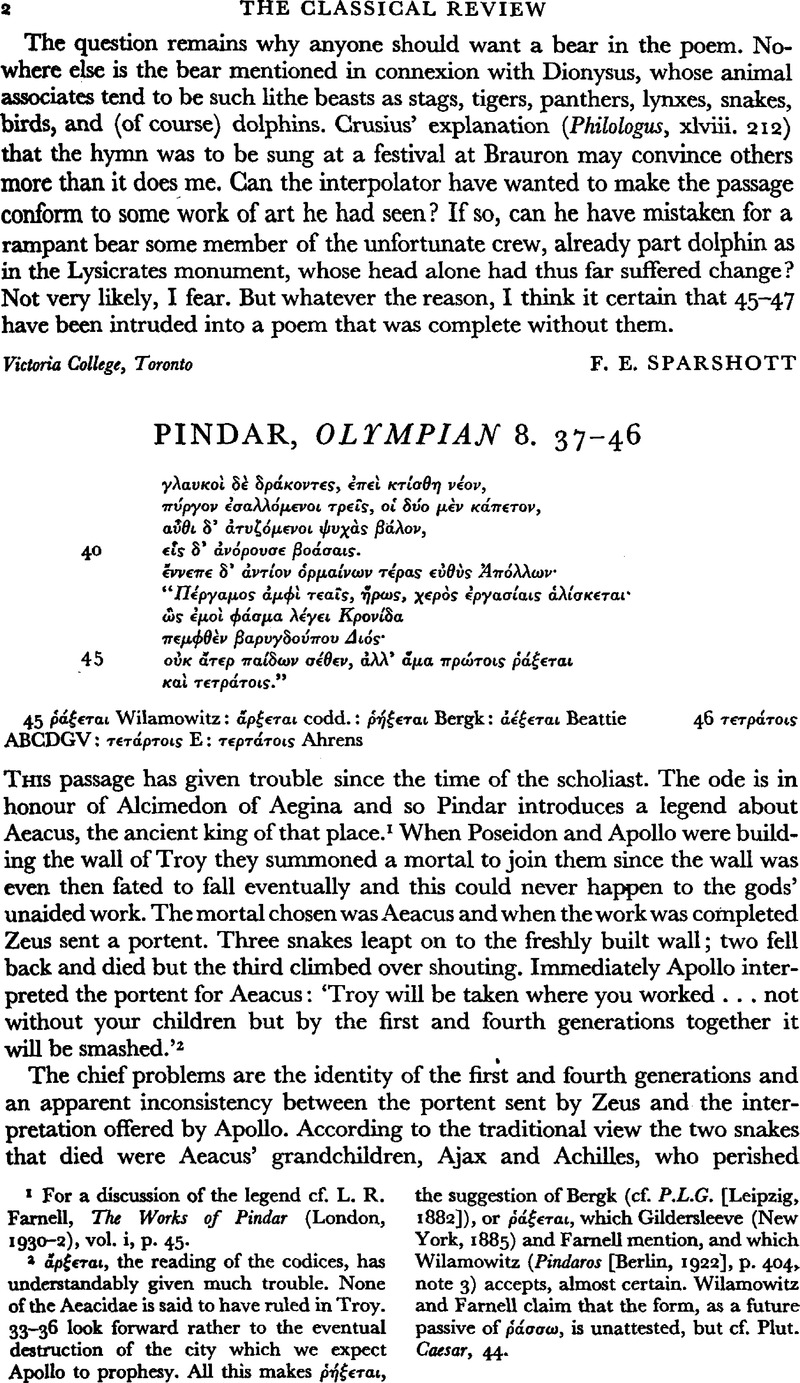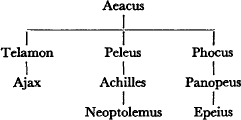Published online by Cambridge University Press: 27 February 2009

page 2 note 1 For a discussion of the legend cf. Farnell, L. R., The Works of Pindar (London, 1930–1932), vol. i, p. 45.Google Scholar
page 2 note 2 ἂρξεται, the reading of the codices, has understandably given much trouble. None of the Aeacidae is said to have ruled in Troy. 33–36 look forward rather to the eventual destruction of the city which we expect Apollo to prophesy. All this makes ῥ⋯ξεται, the suggestion of Bergk (cf. P.L.G. [Leipzig, 1882]), or ῥ⋯;ξεται, which Gildersleeve (New York, 1885) and Farnell mention, and which Wilamowitz (Pindaros [Berlin, 1922], p. 404, note 3) accepts, almost certain. Wilamowitz and Farnell claim that the form, as a future passive of ῥ⋯σσω, is unattested, but cf. Plut. Caesar, 44.
page 3 note 1 
page 3 note 2 The scholiast suggests that in this version at least Telamon was accompanied by his brother Peleus to Troy.
page 3 note 3 In an attempt to solve this difficulty Ahrens, followed by Schroeder (Leipzig, 1900), Bowra (Oxford, 1935), Snell (Leip-zig, 1953), and others, emended τετρ⋯οιςto τετρ⋯οις, but this is an unexampled form.
page 3 note 4 Interpretations and comments of this sort appear in the scholiast and in the editions of Gildersleeve and Sandys (Loeb, 1915). Especially worthy of note in this connexion are the remarks of Farnell (op. cit., vol. i, pp. 45–46, vol. ii, pp. 63–64).
page 3 note 5 C.R. n.s. v (1955), 1–3.
page 4 note 1 Professor Beattie alone has drawn this conclusion; it is curious that he should have made it harder to accept by introducing Telamon and Peleus into the portent.
page 4 note 2 Most interesting is his reference to the L.S.J. article on παῖς, I. 3. Cf. also Pyth. 4. 65 where Arcesilaus IV of Cyrene is called the eighth part of the descendants of Battus I. This requires that we take Battus I as first part of his own descendants.
page 4 note 3 Farnell (op. cit., vol. ii, p. 355) toys with the idea that in these two passages word may have had a technical ritual sense, but he prefers to stay close to the basic meaning of the word and suggests ‘pile up’.